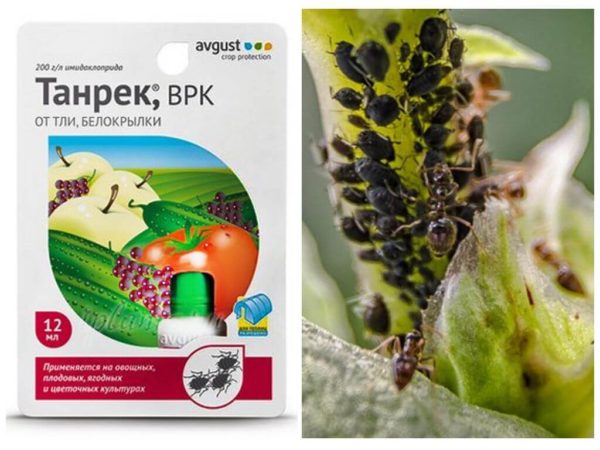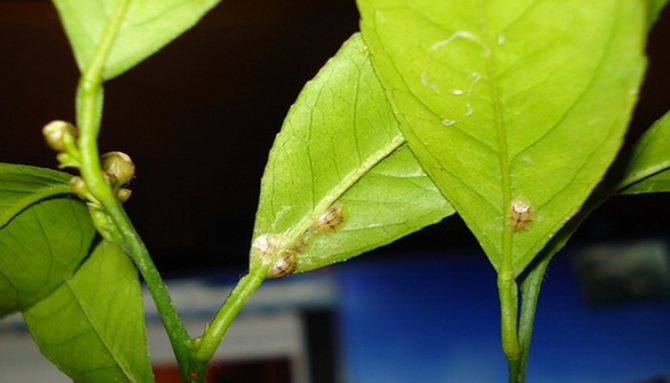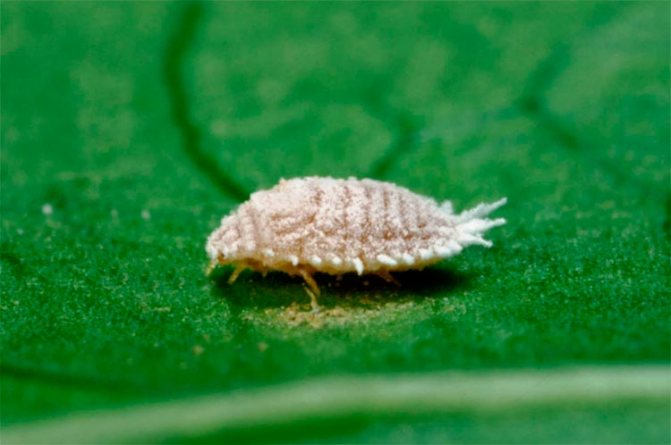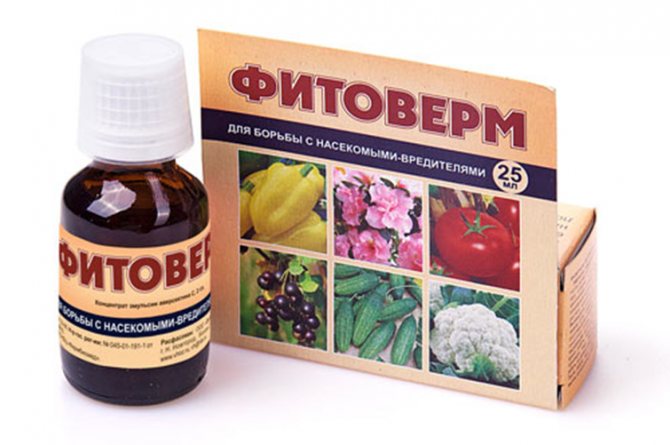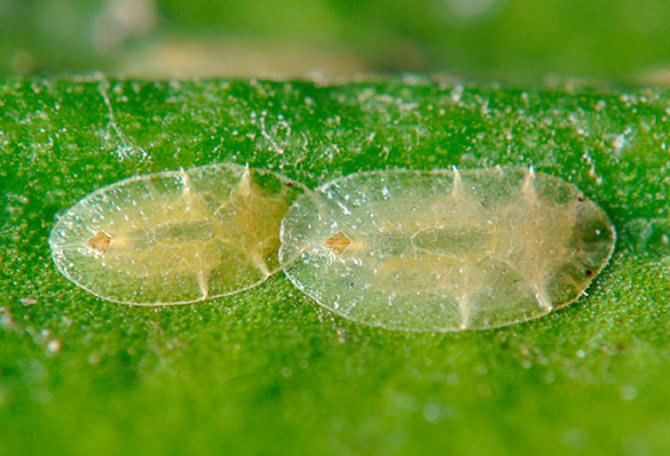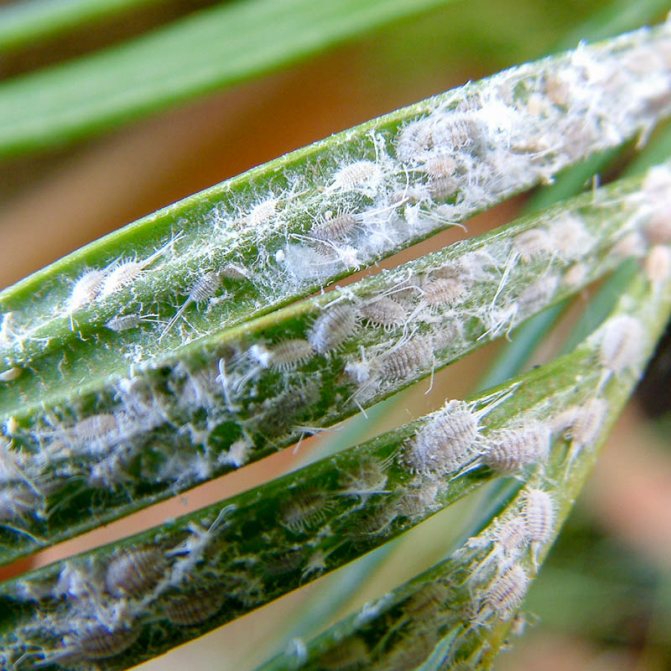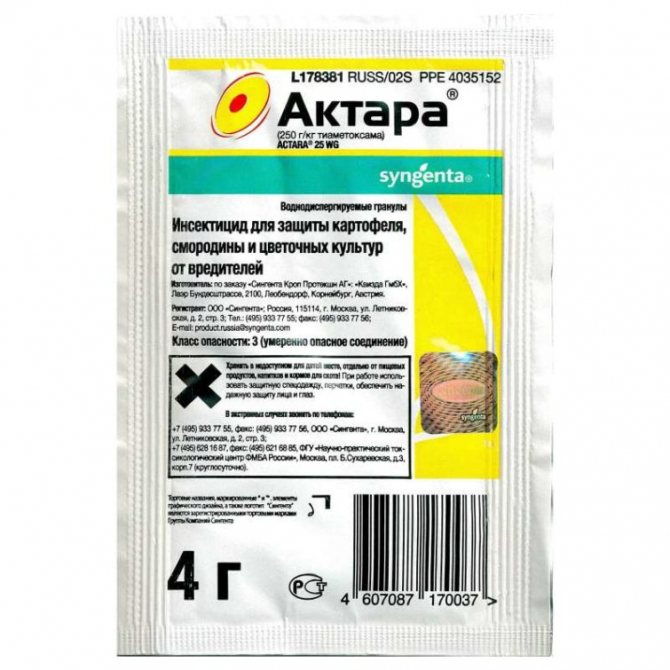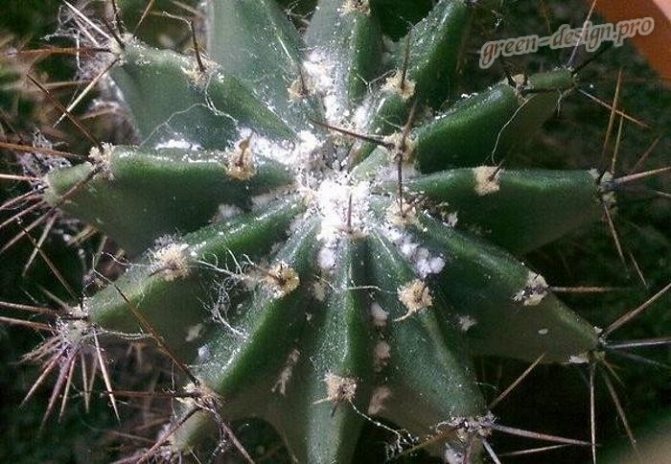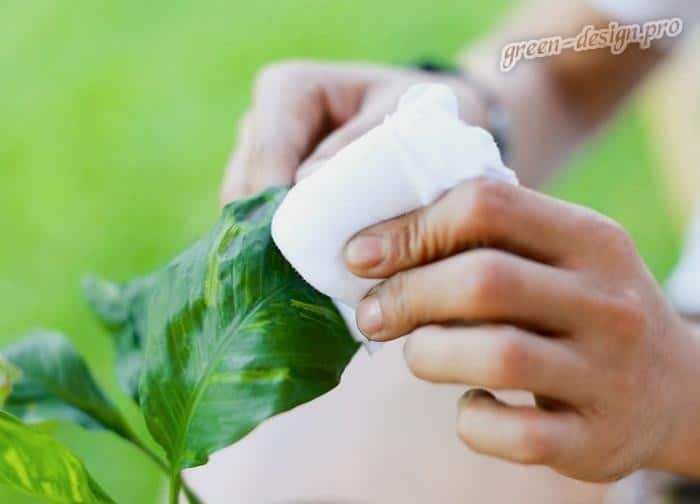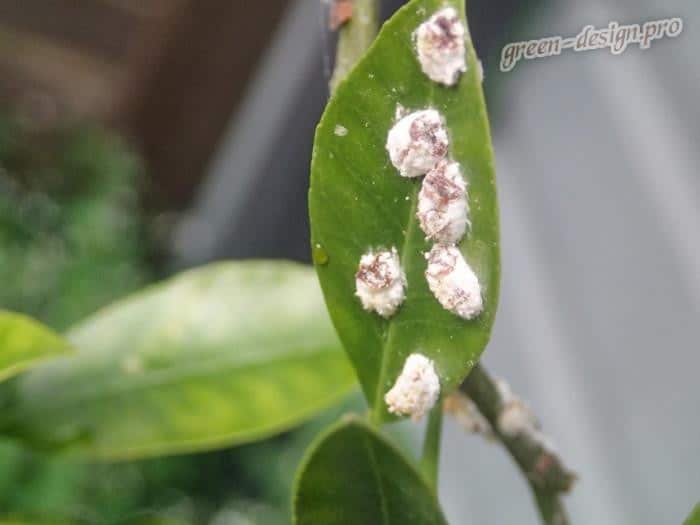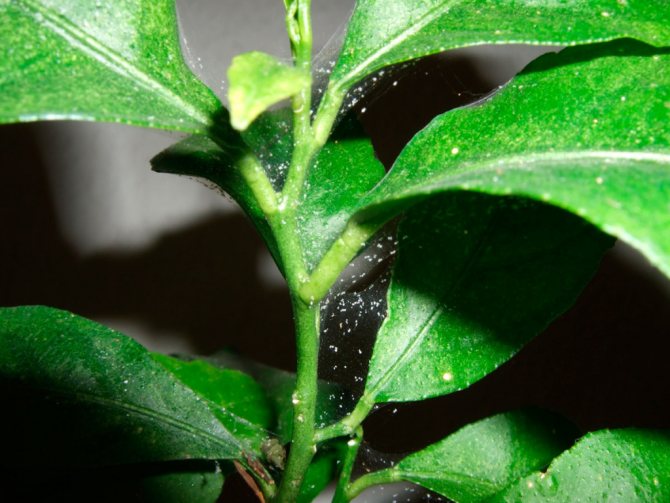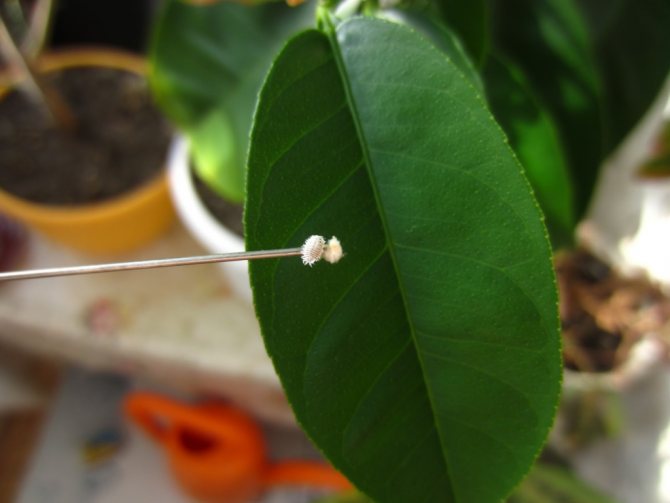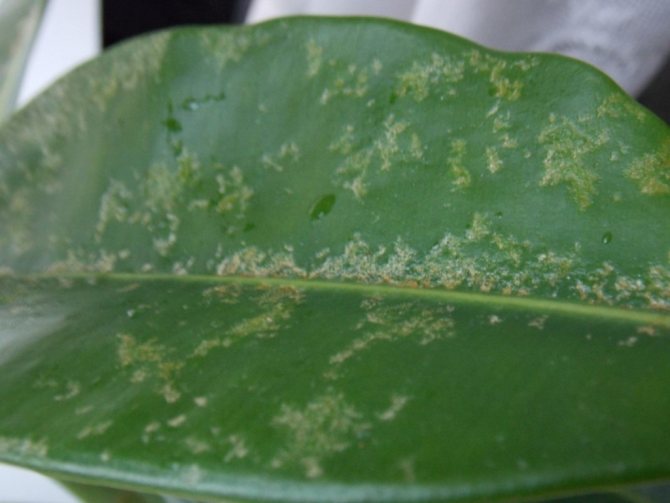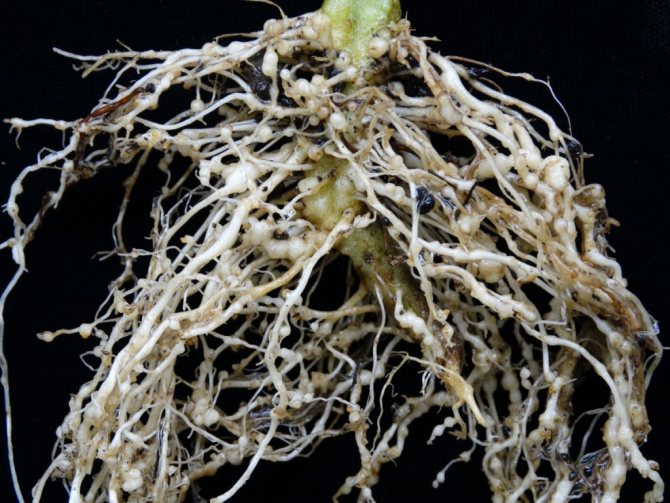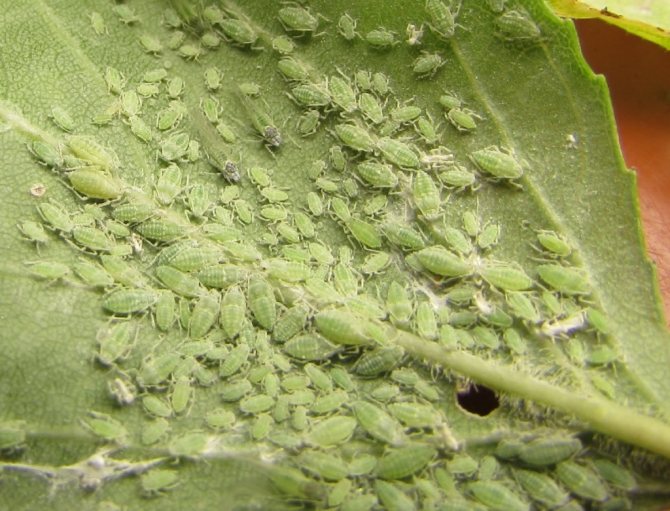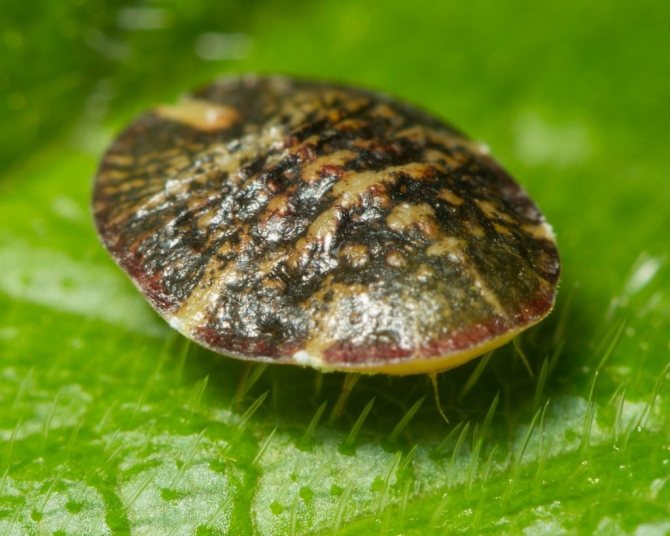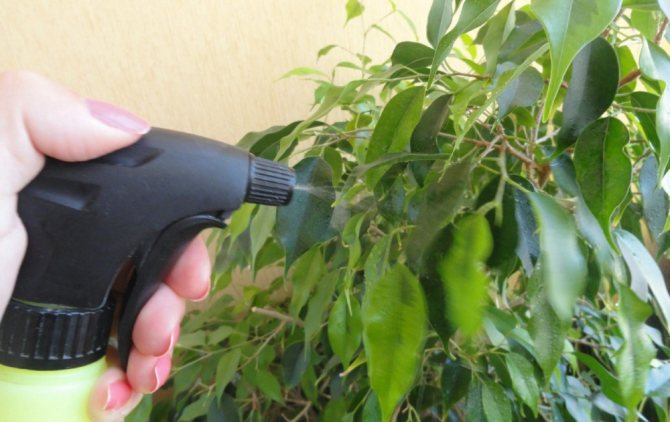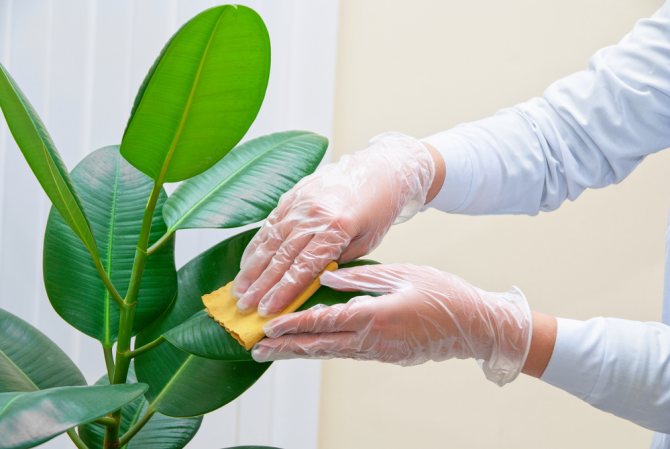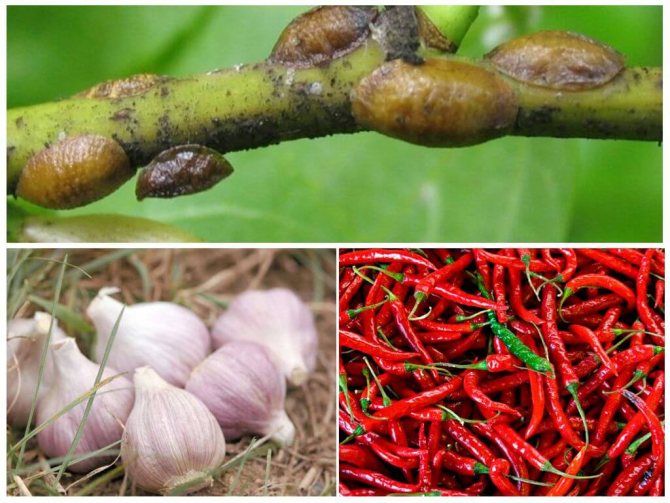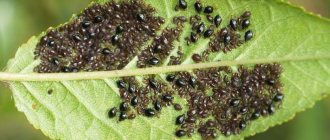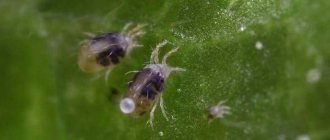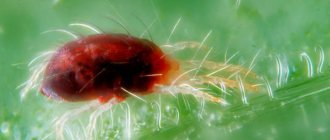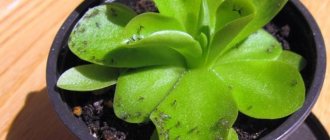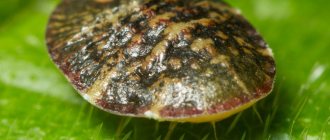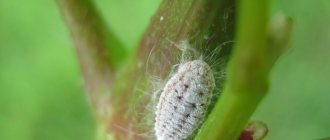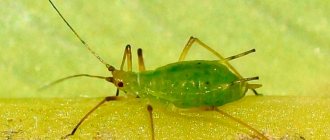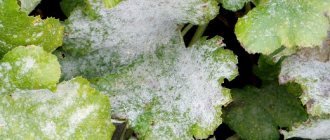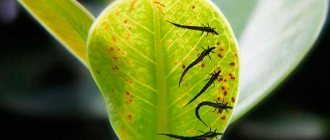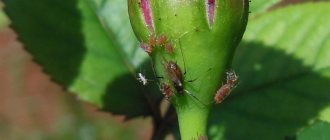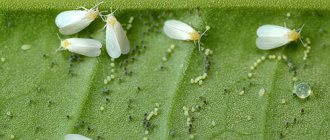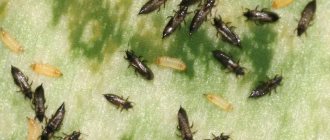Family of worms
Mealybugs are an extensive family of insects. They also have other names: false pillows, felt lice, hairy lice. On indoor plants, several types of heat-loving worms parasitize (suck juices) - greenhouse, bristly, citrus and many others. An amateur gardener does not need to know which particular felt-monger settled on flowers, since these species are similar to each other and require the same methods of struggle.
Interesting!
Males look like small grayish midges, they don't feed at all. Females and larvae are harmful. Males fly, but females do not.
Adult females can be seen with the naked eye, since their size is about half a centimeter, sometimes a little more or less. The body is oval, whitish (sometimes pinkish or reddish), sometimes with transverse stripes. Around the body, numerous thin bristle processes (pseudo-“legs”) are usually discernible, and a double filiform “tail” is often observed behind. Females of hairy lice move or sit motionless. The smallest "wandering" larvae are especially active: they quickly spread over the plant and onto neighboring specimens, and can be transferred with a breath of breeze. During the season, from two to five generations hatch.
The name "mealy" comes from the fact that insects and the plants inhabited by them seem to be sprinkled with flour.
Signs of a mealybug lesion
In the photo, plant lesions look covered with a whitish fluff, reminiscent of cotton wool. This is a special wax plaque secreted by worms, and these insects produce egg-laying in fluffy sacs. Cotton lumps can be found on the stems, in the leaf axils and on the buds, under the scales, on the foliage from below and above, as well as on the root collar and in the roots. If you look closely, you can see the female insects themselves, and small male midges fly nearby.
Pests suck out juices and inject active saliva, which negatively affects plant cells:
- stems droop;
- foliage and shoots are deformed, wither, sometimes turn yellow;
- buds remain underdeveloped;
- flowers are bent;
- ovaries fly around;
- sometimes the bark cracks;
- with a strong and prolonged damage, the plants die.
Mealybugs also produce honeydew (sweet honeydew). Because of it, the surface of the plants becomes shiny and is often colonized from above by sooty fungi. This blackish coating is also harmful to plants.
On a note!
In greenhouses and greenhouses where ants are found, they can be attracted by sugary secretions. Ants are capable of spreading worms, and this also needs to be fought.
Particularly dangerous are those types of false shields that inhabit the root system, since they cannot be noticed immediately. The general depressed appearance of the plant, its wilting for no apparent reason, allows suspecting root damage. Having exposed the roots, you can find cotton balls and light bugs (2 mm in size) in the root zone and on the root collar. Root bugs prefer dry soil, and succulents usually suffer from them.
Scabbard on ficus - what to do when a pest appears?
Not a single plant is immune to the appearance of the scale insect.The reasons for this can be varied: improper care, contaminated soil, diseases of other flowers that are transmitted.
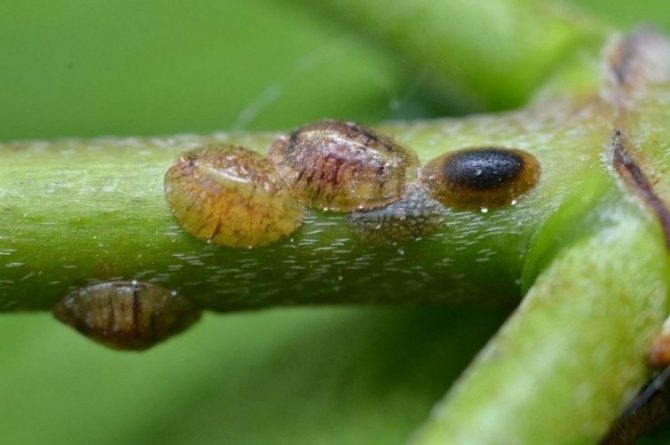
The insect literally sucks out nutrients and juices from the plant, therefore, if damage is not noticed in time, the plant will begin to dry out and die. Often, breeders notice a scale insect on a ficus - what to do when a pest appears?
Where does the mealybug come from?
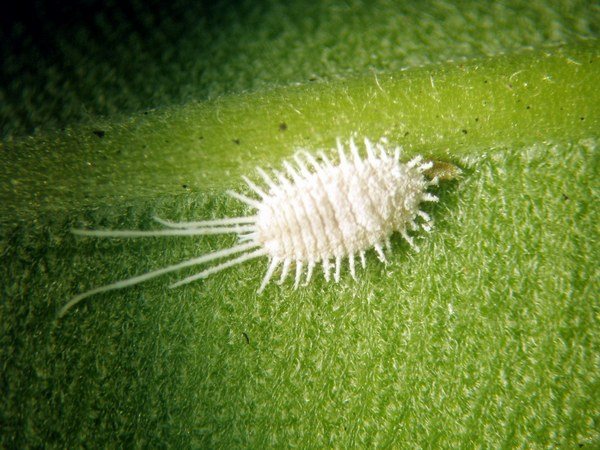

Mealybug not or from poor plant care. Insects enter an apartment or greenhouse in different ways - as a rule, they are brought in with a newly acquired flower. It has been noticed that imported succulents (including cacti), orchids and citruses are often affected by false shields. A felt maker can also come to the house with contaminated soil (purchased) or with a bouquet of shop flowers.
Outbreaks of fur lice activity are usually observed in winter, but can occur at any other time of the year. Worms are more willing to feed and reproduce on weakened plants, they love dry air. Good care of plants and their regular moisture inhibits the growth of the number of insects and their harmfulness.
Preventive actions:
- Separate placement and preventive treatment of new items in the collection.
- Regular examination of pets (the earlier the worm is found, the easier and faster they get rid of it);
- Instant isolation of suspicious instances.
- Quick removal of dried foliage, timely watering and water procedures (washing, spraying).
- Maintaining optimal air humidity.
High agricultural technology does not guarantee absolute safety. Only special methods of struggle will help to completely get rid of the mealybug at home.
You need to know this! Having found the worms, you must carefully wipe the windowsills (with a strong soapy solution) and treat all the plants with the recommended preparations. The pest is stubborn and cunning, so several treatments are necessary.
How did she get on the ficus?
The scabbard on Benjamin's ficus appears in different ways. Among them:
- the acquisition of an already infected plant, because at the initial stage it is not easy to detect a pest without a thorough examination, and in flower shops an epidemic of scale insects is not uncommon;
- together with a bouquet of flowers brought to the house - bought or collected independently;
- rarely the shield enters the room through an open window if the wind brings it;
- ficus transferred to the balcony in the warm season can become infected with pests if they are on neighboring balconies;
- if the house already has plants on which the scale insect lives.
Therefore, it is very difficult to protect plants from infection.
Ways to fight the worm without "chemistry"
Mealybugs can be dealt with without resorting to chemicals, especially if there are not too many insects. Amateur flower growers have tried many folk remedies for mealybugs, and some have been shown to be highly effective.
Stages of work:
- First, the plant is isolated.
- Cut off the affected shoots and leaves, buds and flowers, ovaries and fruits.
- With tweezers, a damp swab or cotton swab (a toothpick or a match with a wound cotton swab), they remove lumps of fluff and insects from the stems and large leaves, penetrating into the leaf sinuses and folds, not forgetting to look under the leaves.
- All affected areas must be wiped with alcohol or a pharmacy alcoholic tincture of calendula (vodka is not suitable due to the low concentration of alcohol). This will help remove the smallest stray larvae as well as sticky deposits.
- It is also necessary to process the bottom of the pot and under the rim.
- In orchids, pseudobulbs are wiped with alcohol, having previously cleaned them of dry scales.
- After these procedures, it is recommended to undertake three processing of plants at weekly intervals.For this, special solutions are prepared, choosing one of the convenient options; they are applied to plants by spraying or brushing. When spraying, the soil in the pot is covered from the drug.
Folk remedies (optional):
- Lemon and / or orange peels - daily infusion of 50 g in a liter of boiling water.
- Garlic (cloves) - chop 8 cloves, pour a liter of boiling water, leave for 4-6 hours, strain.
- Tobacco broth: 100 g is boiled in a liter of water for half an hour, after a day it is filtered and diluted 2-3 times with water. The product is poisonous, and you need to work with it very carefully!
- Pharmaceutical horsetail oil extract. An infusion of dry horsetail herb is also prepared: 100 g per liter of boiling water.
- Olive oil - 1 tbsp l. half a liter of water. The oil film interferes with the breathing of the pests.
- Soap solution: 1 tsp. crushed laundry soap for 1 liter of water. You can use a store-bought insecticide Green soap (1 tablespoon per 1 liter of water). It is recommended to add 2 tbsp to the solution. l. vodka. This remedy is used several times every 3 days.
- You can try to kill the root worm with hot water. The roots are immersed for a quarter of an hour in a large container with water, the temperature of which is strictly +55 degrees.
After processing, the plants are recommended to be transplanted. The pots are thoroughly washed with a strong soapy solution, the suspicious soil is fried in the oven.
How to deal with a scabbard on a ficus benjamin
The scale insects are as serious pests for ficuses as the scale insects. The shield is dangerous because it can go unnoticed for a very long time. Due to the hard skin shield with a waxy coating, covering the insect from above, and the most tight fit to the parts of the plant, it is almost impossible to destroy it in an adult state with the help of insecticides. Favorite places for placing scale insects on ficus are:
- bottom of the sheet
- trunk
- the place of attachment of the petioles to the trunk
With a serious infection, the scale insects can seriously damage the plant and actually destroy it. A sign of such a lesion may be the appearance of a sticky liquid on the leaf plates. Sometimes there is so much of it that it flows from the leaves. Scale control measures begin with manual mechanical removal of adults.
Using a small, stiff brush will make the process easier. You can also use a toothbrush. Manual cleaning is only effective at an early stage. If time is lost, you need to act more radically. For this you need:
- isolate infected ficus
- remove all adult scale insects that could be seen
- cut off the most infected leaves
- spray the plant with Actara solution
- spray the ficus again every other day
- after seven days, carry out the third spraying
Video about pests of ficus Benjamin:
Important! In the summer, it is more convenient to inspect and treat the plant in the fresh air with good sunlight. Regular close examination of ficus is a good prevention of scabbard infestation. The presence of a magnifying glass will increase the reliability of external examinations.
Mealybug Pesticides
In cases where traditional methods do not help, they resort to special chemicals. They are also used for preventive treatments of suspicious newly acquired specimens.
Aktara
Mealybugs are protected by a strong shell and a dense wax coating, therefore they successfully resist contact pesticides. Not all chemicals are capable of dealing with mealybugs. To destroy the felt, you can use organophosphate compounds based on malathion (Fufanon-Nova, Karbofos), but modern insecticides - neonicotinoids, especially Aktara - will be much more effective.
Important!
Aktara (active ingredient - thiamethoxam) is the simplest and most reliable chemical remedy for mealybugs.
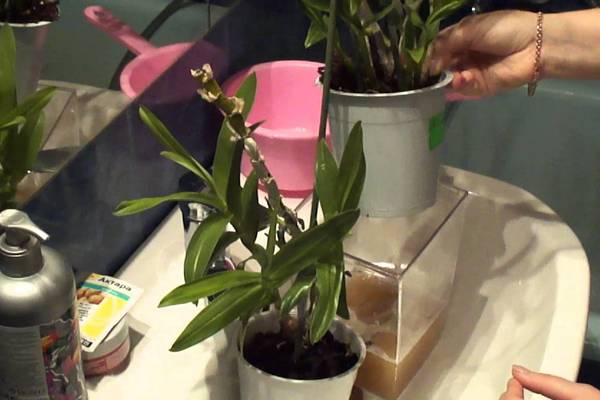

Aktara's drug is diluted in a dosage of 1 g of dry powder (or 1 ml of liquid concentrate) per 1 liter of water. The solution is sprayed and the plants are simultaneously watered at the root.The procedure is repeated three times with an interval of 7-10 days. The product has no effect on the laying, so one spraying is not enough. If it is necessary to prophylactically treat many plants, then for irrigation, the concentration of the solution is reduced by 10 times (take 1 g per bucket of water), but the effect may be weaker.
After watering with Aktara, the roots absorb the chemical, and it penetrates into the cell sap. This poisons the sucking insects as they feed. A similar active substance is contained in a preparation such as Doctor 8 arrows sticks. They are inserted into potting soil for preventive pest control.
Analogs
In addition to Aktara, other neonicotinoids of similar action can cope with the mealybug - in particular, imidacloprid (drugs Confidor, Confidelin, Imidor) and acetamiprid (Mospilan, Stozhar). Confidor Extra is used similarly to Aktara.
Root processing
If a mealybug is found in an underground zone, then the roots are thoroughly washed in running water, and then soaked for a quarter of an hour in any of the above insecticides. Then the plant is planted in a disinfected pot and clean soil. It is advisable to water with Aktara or stick Doctor 8 arrows into the ground (for prevention).
It should be remembered that after using pesticides, it is necessary to observe the waiting periods recommended in the instructions (usually 3-4 weeks), if the houseplant or its fruits are used for food purposes (lemons, pomegranates, spices, medicinal herbs, etc.).
Biological insecticides (Fitoverm, Lepidocid, etc.), as a rule, do not help in the fight against mealybugs.
Chemical treatments
Spraying with potent drugs is especially important in the period of the emergence of new generations of the worm. They are most vulnerable immediately after birth, so there is a high chance of death after the first treatment. At the same time, adults can remain intact thanks to a special shell on the back, so a set of measures will have to be taken to obtain a lasting positive result.
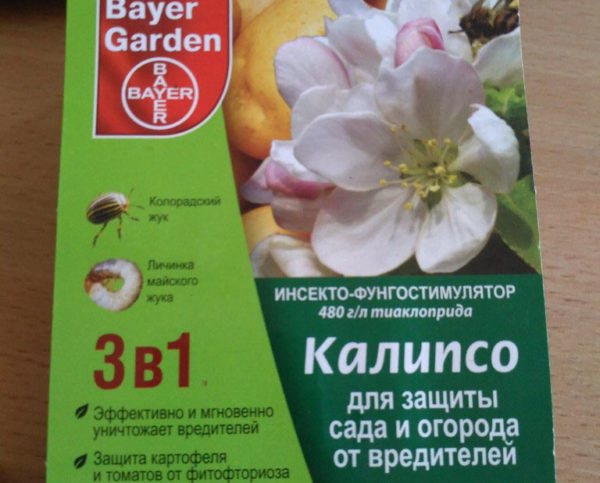

Important!
The principle of operation of the drugs is not only contact with insects, but also absorption by leaves and flowers. Entering the sap of the plant, they kill pests in the course of their vital activity, so their death is inevitable, it just depends on the degree of population prevalence and its generation.
Preparations with a high oil content have proven themselves well in practice. They kill mealybugs, but they can be dangerous to healthy parts of indoor plants, so experts recommend processing only those parts on which insects have clearly developed a vigorous activity (see photo).
